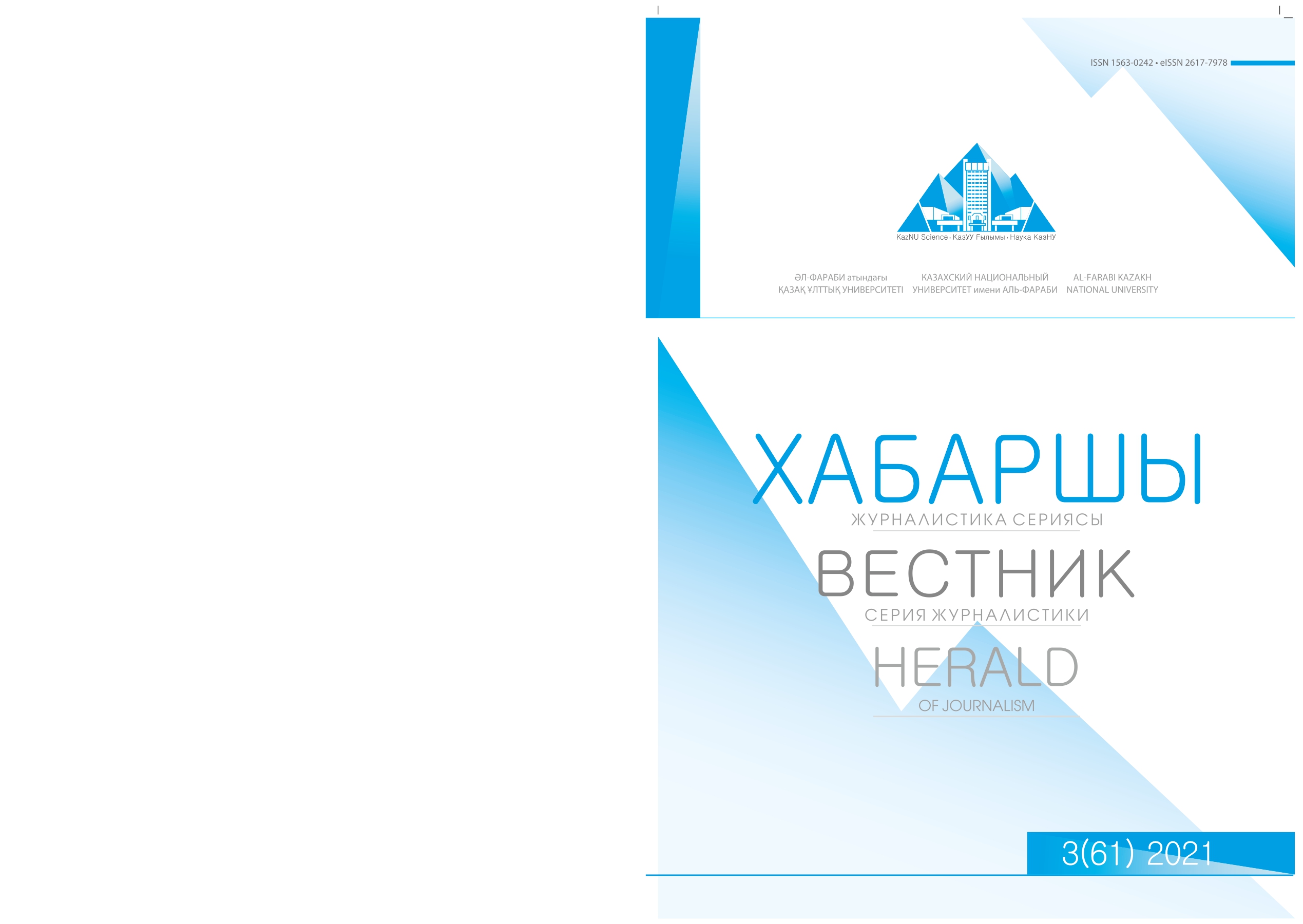The use of writers‘ names and literary images in media texts (on the example of world and russian advertising)
DOI:
https://doi.org/10.26577/HJ.2021.v61.i3.02Abstract
This article discusses understanding the use of the value of literary plots, images, and quotations that help achieve high effectiveness in the advertising industry. Everyone knows that classical literature is always associated with high quality in the public.
The article includes an examination of the motives and techniques by which advertisers appeal to literary images, plots, and characters.
The methodological basis of the article can be defined as culturological, since advertising activity is considered as part of the national culture, as well as a comparative methodology that gives a chance to consider the phenomenon of advertising in the aspect of comparative analysis of literature, journalism and, in general, the mass media.
The use of works of literature and art as a tool of modern advertising, i.e. represent the interaction, the interaction of literature and advertising. The use of allusion, reminiscence (reference to previously read) allows a wide range of speakers, hearing or seeing symbolic concepts (familiar lines, images and motifs, quotations from works of literature), to build an associative series, to show interest in advertising, to respond to it - the process of promoting goods and services is carried out through the impact of persuasion based on the familiar and meaningful literary images and motifs. Advertising translates the values that, we can say, consumers expect, using symbolic (including literary) motives and creates full-fledged brands-symbols of consumer society. Of course, it happens that the symbols become hostages of the advertising idea and are transformed. Therefore, the analysis of advertising from the point of view of cultural studies is necessary, since modern advertising faces the task of competently and productively using the method of symbolization.
The purpose of this article is to display the relevance of the use of literary images and motifs, in the digital-communication advertising strategy.
Key words: journalism and advertising, classical literature, literary plot, motive, quotes, advertising.
References
2. Костина А.В. Основы рекламы. Москва, 2006, с. 38
3. Кохтев Н.Н. Реклама: искусство слова. Рекомендации для составителей рекламных текстов. М.: Изд-во МГУ, 1997. - 96 с.
4. Литературный процесс и русская журналистика конца XIX - начала XX века. (1890-1904). Социал-демократические и общедемократические издания. М., 1981. С. 4-5. – Т.1. – 172 с.
5. Маршалл Маклюэн. Понимание СМИ. Внешние расширения человека. URL: https://designopendata.files.wordpress.com/2014/05/understanding-media-mcluhan.pdf. (дата обращения: 26.09.2021).
6. Олешко В. Ф. Журналистика как творчество // Учебное пособие для курсов «Основы журналистики» и «Основы творческой деятельности журналиста». М.: РИП-холдинг, 2003. http://evartist.narod.ru/text8/26.htm (дата обращения: 26.09.2021).
7. Управленческое исследование индустрии размещения продуктов. Превью: Рассел, Кристель Антония; Белч, Майкл. Журнал рекламных исследований, март 2005 г., Vol. 45 Выпуск 1.
8. Хализев В.Е. Теория литературы, с. 127-128. URL: https://litresp.ru/chitat/ru/%D0%A5/halizev-v-e/teoriya-literaturi (дата обращения: 26.09.2021).
9. Цвик В.Л. Реклама как вид журналистики // Учебное пособие. Институт современного искусства. М., 2001 URL: http://evartist.narod.ru/text16/001.htm#%D0%B7_09 (дата обращения: 26.09.2021).
Reference
1. Dyakova T. A. K voprosu ob estetike reklamy // Reklama i iskusstvo: Sbornik nauchnyh trudov [On the question of the aesthetics of advertising / / Advertising and art: Collection of scientific papers]. V 2-h t./ [pod red. T.A. D'yakovoj]. – Voronezh : Fakul'tet zhurnalistiki VGU, 2011.
2. Kostina A.V. Osnovy reklamy [Fundamentals of Advertising]. Moscow, 2006, p. 38
3. Kohtev N.N. Reklama: iskusstvo slova. Rekomendacii dlya sostavitelej reklamnyh tekstov. [Advertising: art of words. Recommendations for compilers of advertising texts]. M.: Izd-vo MGU, 1997. - 96 p.
4. Literaturnyj process i russkaya zhurnalistika konca XIX - nachala XX veka. (1890-1904). Social-demokraticheskie i obshchedemokraticheskie izdaniya [Literary process and Russian journalism of the late XIX - early XX century. (1890-1904). Social-democratic and general democratic publications]. M., 1981. P. 4-5.
5. Marshall McLuhan. Understanding Media. The Outer Extensions of Man. Retrieved 30 june 2021 from https://designopendata.files.wordpress.com/2014/05/understanding-media-mcluhan.pdf
6. Oleshko V. F. ZHurnalistika kak tvorchestvo // Uchebnoe posobie dlya kursov «Osnovy zhurnalistiki» i «Osnovy tvorcheskoj deyatel'nosti zhurnalista». [Journalism as creativity / Textbook for courses "Fundamentals of Journalism" and "Fundamentals of Creative Activity of journalist"]. M.: RIP-holding, 2003. http://evartist.narod.ru/text8/26.htm (retrieved 2021-09-26).
7. A Managerial Investigation into the Product Placement Industry. Preview By: Russell, Cristel Antonia; Belch, Michael. Journal of Advertising Research, March 2005, Vol. 45 Issue 1.
8. Khalizev V.E. Teoriya literatury [Theory of literature], pp. 127-128. Retrieved 30 june 2021 from https://litresp.ru/chitat/ru/%D0%A5/halizev-v-e/teoriya-literaturi
9. Cvik V.L. Reklama kak vid zhurnalistiki // Uchebnoe posobie. Institut sovremennogo iskusstva [Advertising as a kind of journalism / Textbook. Institute of Contemporary] Art. M., 2001 URL: http://evartist.narod.ru/text16/001.htm#%D0%B7_09 (retrieved 2021-09-26).




